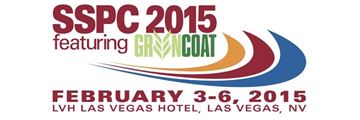Search
Products tagged with '2016 Conference Papers'
View as
Sort by
Display
per page
The Manufacturer’s Standard Coating System - What it can Mean to the Stake-Holders in the Equipment Purchasing Process
Product Number:
41216-981-SG
Publication Date:
2016
$20.00
Traffic Bearing Coating Systems in the Parking Structure Market
Product Number:
41216-979-SG
Publication Date:
2016
$20.00
Trends in Tank Lining Test Methodology for Oil and Gas Service
Product Number:
41216-972-SG
Publication Date:
2016
$20.00
Tungsten Carbide High Velocity Thermal Spray Coatings in the Oil & Gas Industry
Product Number:
51216-006-SG
Publication Date:
2016
$20.00
Two-Coat Polyaspartic Urethane Coatings Protect Virginia Steel Bridges for Over a Decade
Product Number:
41216-994-SG
Publication Date:
2016
$20.00
Ultra-Low VOC Waterborne Alkyd Coatings with Exceptional Corrosion Resistance
Product Number:
51216-018-SG
Publication Date:
2016
$20.00
Understanding the Effects of NaCl Concentration on Zinc Phosphate Pigment Morphology and Composition by Advection Through Phenoxy Thermoplastic Free Films
Product Number:
41216-946-SG
Publication Date:
2016
$20.00
Unique Application of an Epoxy Repair Gel to Eliminate Draft Tube Surface Wear and Cavitation, potentially Improving Turbine Power Generation Efficiency
Product Number:
41216-976-SG
Publication Date:
2016
$20.00
Update to SSPC-PA 9 Paint Application Specification
Product Number:
41216-945-SG
Publication Date:
2016
$20.00
Using Forensic Science to Determine Causes of Failures of Polymeric Coatings
Product Number:
41215-875-SG
Publication Date:
2015
$20.00












